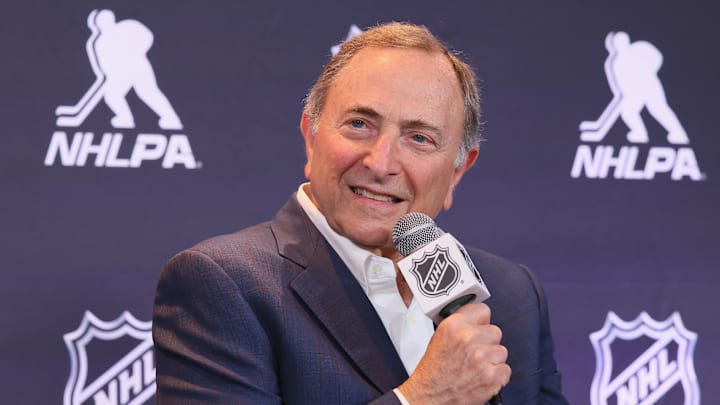The NHL and NHL Players' Association announced Tuesday morning that they have agreed on the terms of a new Collective Bargaining Agreement (CBA), and there are some major changes being reported that will impact the future of the league.
This is welcome news for fans and executives because it means we will avoid another full-season lockout like the one that cancelled the 2004-05 season, or even a partial-season stoppage that reduced the 2012-13 season to 48 games.
The CBA will go into effect at the start of the 2026-27 season and run all the way through the 2029-30 season. Here's some of the information that we know about the latest deal so far.
Longer NHL season to be implemented
The most notable change being reported is that the NHL season will be lengthened by two additional games, meaning each team will have 84 outings every year. Every club will still be able to play four matchups against their divisional rivals and two games against teams in the opposite conference.
The cost of that is reducing the preseason from six games to four games in order to make up the difference. So far, it would appear that players are welcoming this change to the schedule, despite the potential for additional wear and tear.
"I’d much rather have a couple more regular-season games than risk injuries in meaningless matchups. Plus, fans would rather see games that count."Lightning's Mikhail Sergachev via RG.org
This is the first time since 1994 that the NHL will play more than 82 games in a season. From 1992 until the rule change ahead of the 1994-95 season, each team skated in 84 matchups. At that time, there were only 24 teams in the league. The extra two games were played at a neutral site for those seasons, but that will not be happening this time around.
New equipment rules for players
One of the other sweeping changes will reportedly require new NHLers to wear neck guards starting in 2026-27. The NHL's senior VP of hockey operations, Colin Campbell, said he hopes that neck guards will become “just like visors, and helmets before that" -- a regular part of the game that increases player safety.
During the most recent season, it was reported that only 55 players chose to wear neck guards. Yet there have been some scary incidents over the years involving skate blades that have caused some serious injuries. Players who made their debut prior to the 2026-27 season will be grandfathered in and given a choice whether to wear a neck guard.
There are questions about whether this will hinder players' movement, but that sentiment has been disproven. Retired NHLer T.J. Oshie championed a push for more players to wear neck guards, even founding his own brand called Warroad. He began wearing the equipment in the 2023-24 season and denied that it got in his way at all.
"I'd hope it shows that it's really not a distraction from my game. I thought I played pretty decent tonight. Honestly, it was actually really comfortable. So youth players, if they're able, I hope they can get some type of neck protection. I didn't even notice it after one shift tonight."T.J. Oshie, via The Hockey News
Salary cap and contract length adjustments
One of the more significant financial changes is that the maximum contract lengths are being reduced by one year. Players can only sign seven-year extensions with their teams now, while free agents are limited to six-year contracts.
Most notably, the long-term injured reserve (LTIR) loophole is reportedly going to be closed in the new CBA. That means that playoff-bound teams will need to be salary compliant at the start of the postseason, limiting their ability to free up salary space in the regular season and then activate the injured players once the playoffs roll around.
Popular examples of that loophole include the Vegas Golden Knights placing Mark Stone on LTIR, then using the free cap space to acquire new players at the trade deadline in more than one season. Stone would return for the playoffs each time. The Tampa Bay Lightning did the same thing with Nikita Kucherov in 2021, putting him on LTIR during the regular season then activating him prior to the start of the postseason.
This has been a source of controversy among fans and teams alike, but it would appear that the change is finally going into effect.
More information will continue to be reported regarding the terms of the new CBA as it is officially ratified by the NHL and NHLPA in the coming days.
